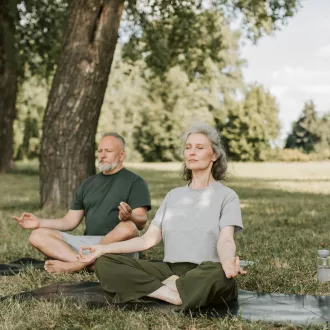Transcription Communication skills
We possess an innate quality: to relate to others, largely due to our condition as biopsychosocial beings. Life endows us with an organic capacity: we can speak thanks to our mouth, lips and voice; look into the eyes of the interlocutor and thus express doubts and feed back an effective response that complements the message. With this CAPABILITY acquired and susceptible to development as we grow, we are guaranteed to be able to speak and create conversation topics, but not included in the lot is the ABILITY to communicate well, to interpret with certainty what they want to convey to us and vice versa. In this chapter we will deal with communication skills under the principle of immediacy.
Immediacy principle.
This principle takes into account those actions or behaviors: verbal and non-verbal, used to project an image of closeness and warmth to the other. Always be yourself, but train this skill and perfect it. It's not a good idea to be "ordered to stay away" in your social encounters, is it?
Verbal communication includes: tone, humor and self-revelation, which is nothing more than expressing subjective worlds as a coach. Non-verbal communication includes: smile, touch, look, and physical appearance. Yes. Yes, the garment chosen, especially the color, does have an influence on the automatic trust placed in us.
Closeness.
The proxemics, or also called physical distance that occurs between two or more individuals, depending on the communicative situation is defined as:
- Social distance: understood as between 120 and 360 cm. A meeting with your co-workers, a recreational place with people you literally do not know.
- Personal distance: It is recognized around 46-120 cm. You enjoy with your friends, siblings or people you trust with the occasional physical contact, shoulder rubbing, etc.
- Intimate distance: Measurable at a distance of 15-45 cm. You interact with your partner: looking, touching, kissing, etc.
Verbal communication.
The tone of voice affects the emotional perception, speak slowly, breathe well and above all think first before modulating any tone, emotions could come out easily, manage them! The tone of voice enhances a message, if we say "I love you" with a tired attitude while snorting, it would distort the meaning in broad strokes.
Also, refer to the positive elements in the conversation, modeling appropriate words that do not impede but enhance a sense of support and trust. Being a close person includes always maintaining a positive attitude, without engaging in furtive expressions of violence or verbal aggression.
Nonverbal communication.
When to seduce or notice that a woman is predisposed for courtship? Sometimes we ignore that with a sustained gaze for a prudential time, avoiding a frown and showing kindness, apart from raising awareness of that "triangular gaze", certain areas on the face that we focus on, could help to achieve that closeness:
- The first triangle is the one between the forehead and the two eyes. This is used towards unfamiliar people.
- The second triangle: the eyes and the tip of the nose to friends.
- The third triangle: the eyes and the mouth, is considered the most intimate, used in couples. It reveals intimidation and far from bringing you closer, it would stand out for its remoteness if used frequently.
- Most people tend to focus on the first triangle in their social encounters or combine the three in certain formal or neutral encounters. The posture can not be rigid, if someone tells us their problems interact with him, tilt your head to one side or nod.
- When we like someone, we unconsciously move closer, at a personal distance. The tips of our toes, and their body in general, point at you and remain receptive, we feel no tense reaction or anything to be uncomfortable about. His lips cannot draw a straight line. Bring to life a natural, unforced smile. If the situation does not merit laughter either, communicate with gestures of surprise or astonishment.
Touch.
Touch generates connections with the other, as long as you wait for the perfect moment. The skin, not only was one of the first organs to develop in our embryonic period, but it receives hundreds and hundreds of stimuli daily. When we want to offer comfort and confidence we can hold, for a minimum duration, the forearm, or give a hug, always taking care of the personal or intimate distance. In case of greeting it is important that the hand is neither cold nor hot, nor a strong handshake either. In its right measure!
We must also take into account the relationship, if a student puts his hand on the teacher's shoulder it would be rude, but if the teacher does it, it would be a sign of rapprochement.
Physical appearance.
There is no second chance to make a good first impression, does the phrase ring a bell? The appearance you wear makes a high percentage of positive or negative impressions. To achieve a warm appearance, it is necessary to take into account the timing, i.e. the use of colors. Due to a thermal association of heat and its direction to fire or ice, warm colors, taking into account higher or lower intensities such as yellow, orange, pink, red and beige transmit dynamism, joy and activism. The following colors stand out for their coldness: green, blue, purple and gray enhance the condition of coldness. Stay away from them if you want to look close.
communication skills



